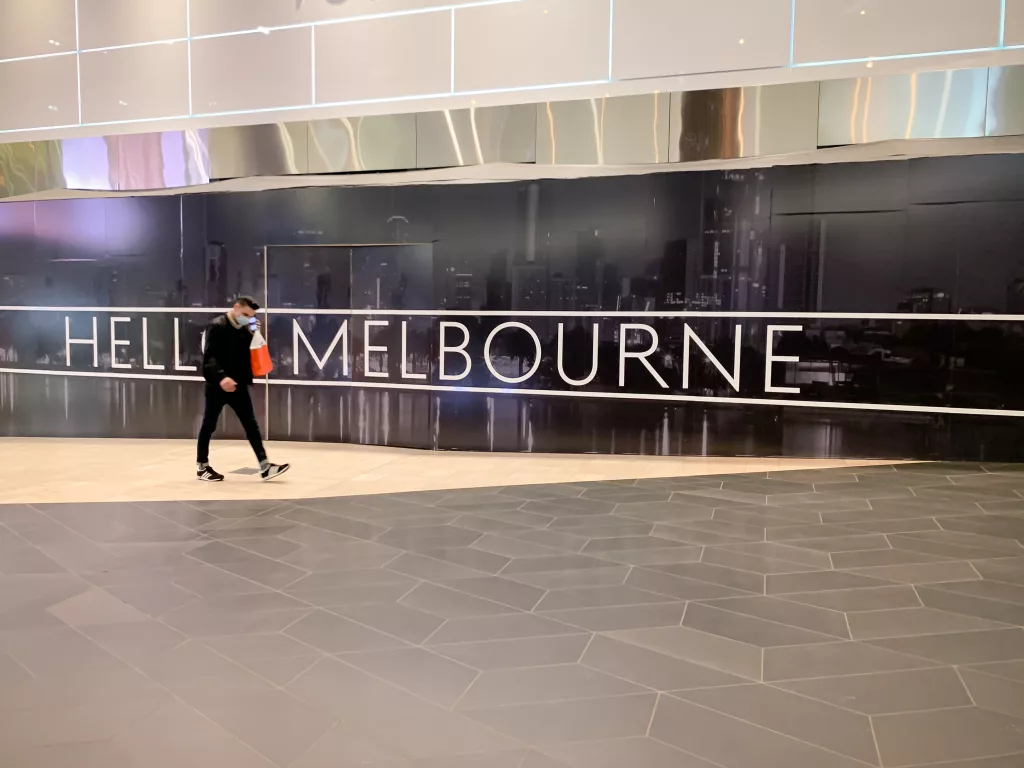

Remote digital transformations: How Danish software provider YAVICA and Australian Melbourne Airport successfully implemented a real estate ERP system half a world apart.
An ERP solution unifies people, processes, and technology across an organization, but making such a change to the backbone of a company is a complex project. This case study explores how such a crucial project can be successfully implemented when the physical distance is as far as it can get.
Melbourne Airport
Melbourne Airport is the primary airport for the state of Victoria, Australia. It is the second busiest airport in the country, serving approximately 31 million passengers a year (2022/2023). Melbourne Airport manages the leases across the precinct, which also includes the Melbourne Airport Business Park, Australia’s largest, spanning more than 500 hectares. It offers tenants fast access to air freight, on-site 24/7 security, and close connections to arterial roads as they grow to become Australia’s favorite airport destination.
Coming from MRI Real Estate Software, Melbourne Airport wanted to simplify their total application landscape with an integrated out-of-the-box solution. Since they had already been implementing Microsoft Dynamics as a core business platform, YAVICA’s Microsoft-embedded real estate solution, FlexProperty, immediately made sense the preferred choice for managing their properties and leases.
YAVICA
YAVICA is a global real estate software provider that is gradually becoming the no. 1 competitor to established real estate solutions like Yardi and MRI. Bridging ERP and CRM, YAVICA’s FlexProperty is an end-to-end real estate solution embedded in Microsoft Dynamics that is open to innovation and integration.
Since its establishment in 2017, YAVICA has helped digitally transform commercial- and residential real estate giants worldwide, such as Tishman Speyer, Atrium Real Estate, Newsec, Industrials, Workspace and more

Challenge and goals
Melbourne Airport had already implemented Microsoft Dynamics 365 across multiple business areas and wanted an integrated solution that could also handle their properties and leases.
It was important for Melbourne Airport to simplify their applications environment, become more efficient, and reduce the likelihood of human mistakes. But would that be possible, given the complexity and scope of airport processes?
80% is Change Management, 20% Configuration
Whether it’s a remote project or not, every successful ERP implementation starts with change management. YAVICA’s COO, Ditte Ruud, emphasizes that it’s in fact the no. 1 prerequisite for any large implementation but is still an area where most organizations fail. This is the reason why YAVICA also provides a change management service along with configuration of their solution.
“In the end, we’re in the same boat with the same end-goal. Their success is our success.”
-Ditte Ruud, COO at YAVICA
Since the implementation of FlexProperty was one of several streams in Melbourne Airport’s digital transformation journey, a change management strategy was already in place and several initiatives had already happened prior to project kick-off.
Melbourne Airport Project Manager, Jahanzeb Umair, says that because their employees and management were already familiar with the D365 interface, the change management necessary for the FlexProperty extension was easier. However, because they wanted to simplify their environment by adopting a standardized solution, they still needed to reset internal processes.

Solution modeling and playback
An ERP system is the backbone of any organization, and real estate companies typically stick with the same solution for decades. When adopting a new solution, it’s therefore essential to focus on the business goals and how configuration and processes in the new solution can help leverage their desired future.
“We don’t want to merely translate processes from one system to the other; we will challenge the status quo and build new processes that can help our clients become more efficient and meet their business goals.”
-Ditte Ruud, COO at YAVICA
In the solution modeling workshops, YAVICA and its clients take a point of departure in standard processes by Microsoft and FlexProperty and develop new, smarter processes where needed. When the environment has been updated, they will go through the solution end-to-end and play back all future processes.
To keep true to the project’s guiding principles, Melbourne Airport decided to reduce the number of customizations and focus on evolving their business processes. The team were impressed by Yavica’s ability to understand the complex scenarios unique to their business and provide best practice solutions:
“The standard configuration covered 99% of what we wanted without requiring any customisations, and YAVICA really understood the business needs.”
-Sajaad Farook, Project Owner at Melbourne Airport
Managing Remote ERP Implementations
Working remotely is hardly a new thing these days, and most companies are accustomed to collaborating digitally. Off-site ERP project implementations are no different and, in some cases, remote delivery is the preferred approach when dealing with multi-company, multi-site implementations.
However, large ERP implementations can still be intimidating to run remotely, especially when there are also cultural and linguistic differences. YAVICA is a remote-first company and, based on their experience from more than 50 implementations worldwide, they recommend the following to companies considering a remote implementation:
- Meet up physically at the beginning of the project to establish relationships
- Conduct workshops with a maximum length of 3 hours
- Sharpen communication and digital facilitation techniques to keep engagement high
- Spend time on cultural interpretations and expectations
- Schedule daily virtual meetups
- If not using Microsoft’s products, make sure to invest in a tech stack that works
Implementation with an asynchronous work practice
Embarking on such a large and crucial project with a solution provider across the world also adds time-zone differences to the remote implementation process. To Melbourne Airport, this was never an issue, even calling it “an advantage” to work asynchronously.
Asynchronous work refers to a business practice where tasks, communication and processes are not time-bound and where team members don’t need to be online simultaneously. This happens naturally when teams are spread across different time zones, but there is still much to gain from adopting best-practices. Both YAVICA and Melbourne Airport agree that when applied successfully, asynchronous work is a strength for project implementations if you:
- Record every meeting and workshop. This not only allows for playback and important detailed documentation, but it also helps new team members during the project to get on board more efficiently.
- Allow more flexibility to the employees. Asynchronous work schedules allow employees to set their own hours and work when most convenient for them – a modern employer branding attribute that attracts top talent.
- Leverage differences in working hours to progress faster. This happens naturally when teams work across time zones, but all companies can strategically leverage this by shifting certain functions e.g., having developers in a “night” time-zone means things can be ready when others meet in the morning.
YAVICA ’s delivery team is scattered across the world with project members in Denmark and India, leaving 4-10 hours in time difference to Melbourne. While Senior Functional Consultant, Pratik Lahoti, says that “the time-difference gave us more time to work on things for the customer,” YAVICA also faced some internal challenges working half a world apart from its client:

“When you’re up at 1.30 AM to run a workshop, you can’t also have meetings during regular work hours in your own time zone. There needs to be a transparent organizational understanding of that and management support for employees to set boundaries”
-Ditte Ruud, COO at YAVICA
With management attention dedicated to maintaining employee happiness, YAVICA is continuously improving internal processes and work structures to keep employee turnover low and become a preferred employer for top talent. As YAVICA continues to win territory, the delivery team continues to grow worldwide, with a recent addition in form of a new office in South Africa.
Melbourne Airport went LIVE with YAVICA FlexProperty on Microsoft Dynamics F&O on July 28, 2022.
Other stories

Our solutions
YAVICA
Data management
Manage large amounts of data with company groupings, hierarchal structures and enhanced reporting.
YAVICA
Loan management
A scalable solution to process, handle and optimize large volumes of debts and commitments in Microsoft Dynamics 365.
